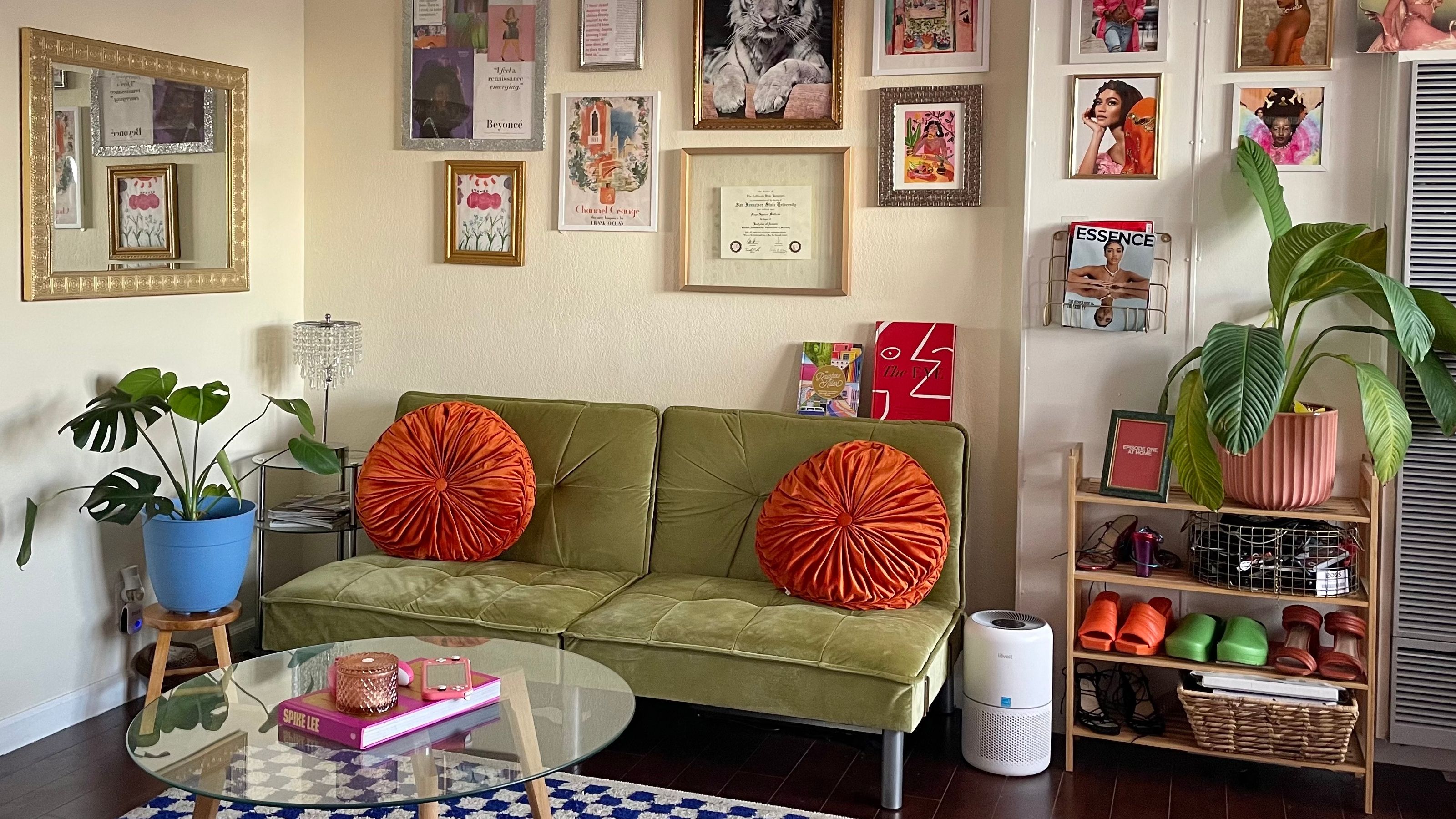
Decorating a home with white walls has its pros and cons. While on one hand, white-painted walls can serve as a neutral base that can help with pattern, style, and color mixing. White walls also contribute to creating a more open and bright space.
On the other hand, the lack of color on your walls can also make your home feel dull or that it lacks personality.
However, with a few key design choices including decorating with color, mixing patterns, and being bold with furniture choices, you can turn your white-walled space into an inviting and welcoming home.
Add Texture With Rugs and Curtains
With white-painted walls, adding texture including curtains and rugs can help create a warmer environment. Exploring many types of textiles, including cottons, linens, natural fibers, and velvet can add dimension to your space and create a more personalized appeal.
Rugs can be used in a variety of ways and come with many benefits — adding color, softening sound, adding warmth, and creating focal points. By finding the right curtains, pillows, throw blankets, and table runners for your space, you can inject more personal style and avoid allowing the white walls to take over your space.
Embrace Different Lighting
Lighting is a very powerful tool in changing the look and feel of your space. Because white walls can make a space look brighter, scaling down that brightness with different types of lighting can create a more inviting environment.
Changing your lighting can come down to switching out small details, such as subtracting or adding a few table lamps (like this Insta famous mushroom lamp) changing light bulbs, or adding curtains.
However, bigger changes — such as switching out ceiling lights or adding window treatments — could create a bigger transformation. Other ideas, such as adding colored light bulbs or using transparent colored curtains, can also add more depths of tone to a space.
Take Advantage Of Showcasing Artwork
Whether you prefer sleek modern photography or you collect handmade ceramics, one of the best aspects of having white walls is that it can be the ideal blank slate for showcasing artwork.
In order to fully take advantage of this blank backdrop try adding white-painted shelving or light-colored furniture pieces to showcase art pieces and add more dimension.
White walls can also serve as a great place to create personalized gallery walls, where many of your favorite framed paintings and photographs can be exhibited.
Welcome Some Plants
White walls can make a home feel sterile and lacking in style but by adding some greenery, such as indoor trees, hanging vines, or small succulents, you can add some warmth and depth to your space.
A simple way to bring life and color to each of your rooms, adding houseplants can also improve the look and feel of a room. Houseplants can even offer additional benefits, from air purification to improving your mood, making your space into more of a home.
If you don’t have a green thumb, consider the more low maintenance options available.
Dare To Go Bright With Color
One of the biggest advantages of moving into a space with white-painted walls is that you have total freedom when decorating and experimenting with color.
Whether you prefer darker, moodier tones or want your home to be decked out in neon, white walls give you free reign to develop a color palette that fits your personal style.
When choosing your favorite ways to decorate, consider establishing a color palette early on and sticking by it. Take your established colors when shopping for decorative details, such as curtains, throws, painted furniture, and more, and this will better allow you to create a more cohesive overall design throughout your space.
Go Bold With Patterns
Another advantage of decorating white-painted walls is that you have more freedom when choosing how to design with patterns. Since incorporating more bold elements is easier when you have a neutral backdrop, experimenting with patterns can allow you to create a more stylish space that feels like your own.
If you’re new to decorating with patterns, begin by identifying the color palette you want to use throughout your home. Mixing types of patterns, using repeat patterns, and decorating with pattern sizes (for example, smaller polka dots with large polka dots) allows you to have a bit more fun when choosing design elements for your space.
Consider Embracing Neutral Tones
Before adding colors and patterns, consider whether your personal style leans towards a more minimalist approach. If you prefer a clean-looking palette, you might want to consider opting for furniture and textures that can reflect the lightness of the white-painted walls before adding too many details or furnishings.
Decorating with natural materials and light tones, including undyed textiles, light or bleached wood, beige-painted furniture, clear glass, and light-colored stones, can help you embrace the white tones of the walls.







